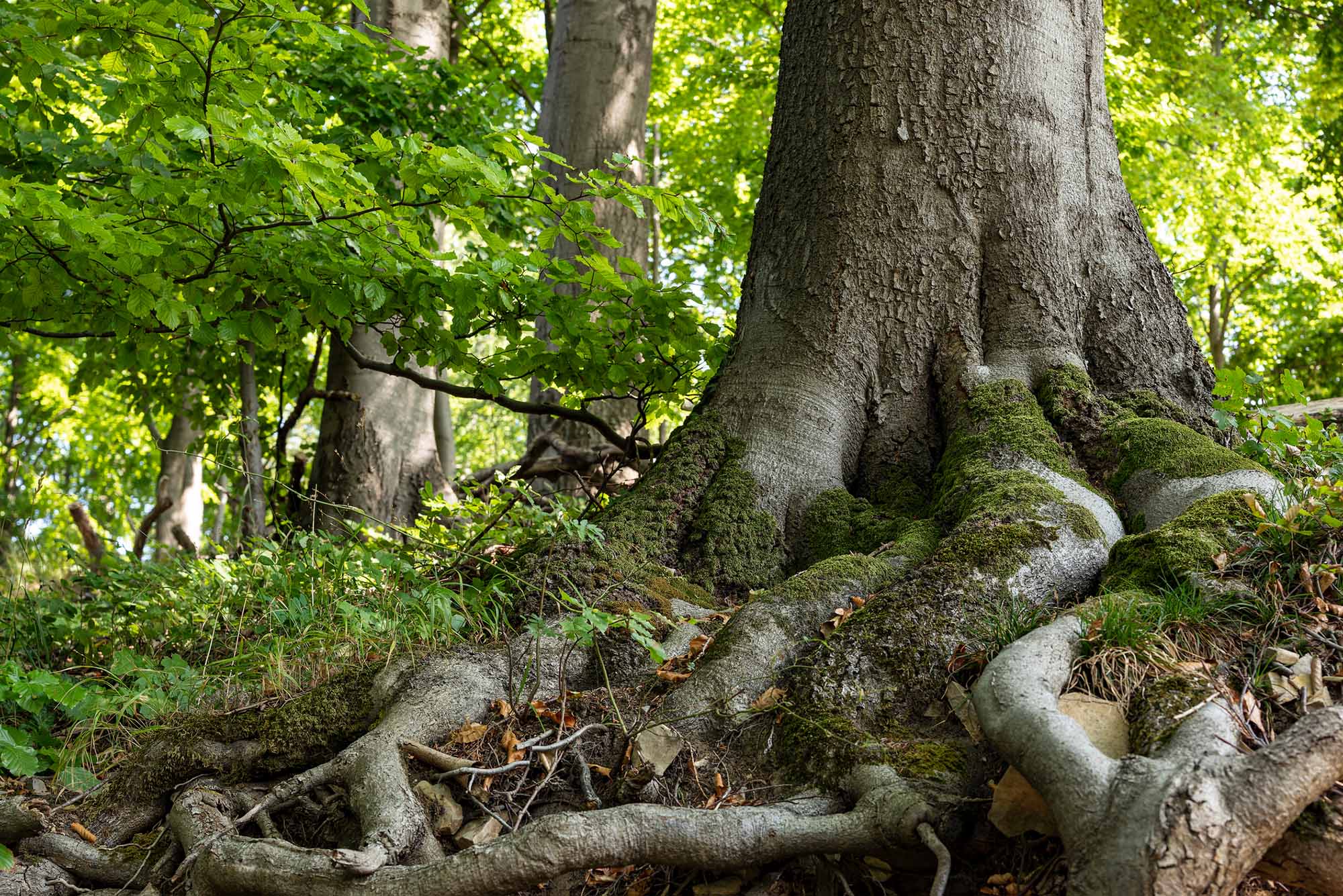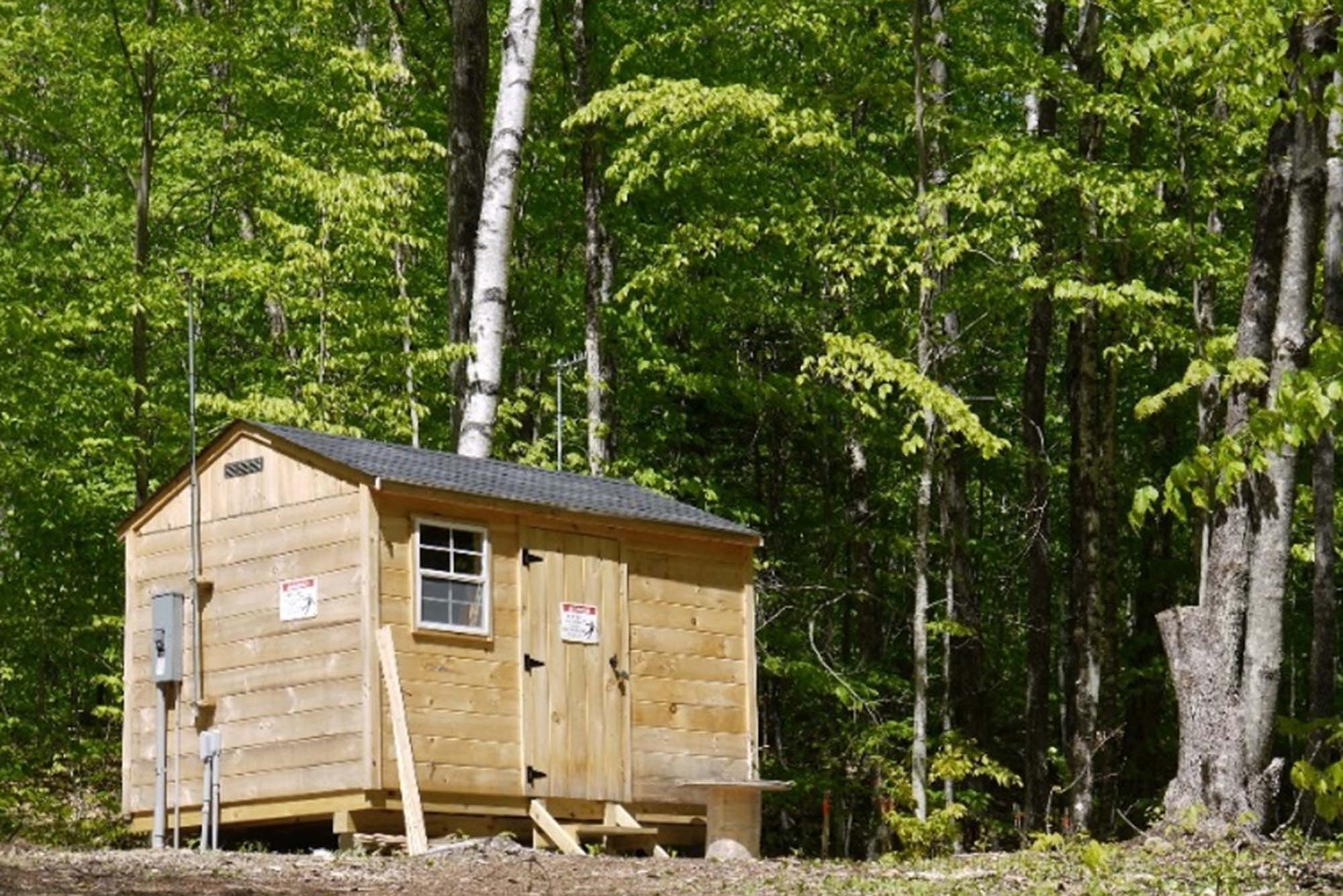Less Snow Makes Trees Absorb Less Carbon, According to New BU Study
Over a decade of data demonstrate that in a warming climate, less snowpack in New England could disrupt tree growth and carbon uptake

BU biologists studied how shifting seasons due to climate change—hotter summers, milder winters—impact tree growth and northeastern forests’ ability to store carbon dioxide. Photo via iStock/teddiviscious
Less Snow Makes Trees Absorb Less Carbon, According to New BU Study
Over a decade of data demonstrate that in a warming climate, less snowpack in New England could disrupt tree growth and carbon uptake
Twelve years ago in a northern New Hampshire forest, Boston University biologist Pamela Templer and her team laid heating cables under the soil of maple and beech trees. Careful not to disrupt the roots, their goal was to test how climate change—and, particularly, less snow accumulation and hotter summers—might affect tree growth and the ability of this forest to store carbon. The section of land, located at the Hubbard Brook Experimental Forest, became an active laboratory.

Because trees take in and use carbon dioxide to grow, they’re one of our most important natural resources for capturing planet-warming greenhouse gases like carbon dioxide. Since laying the cables, Templer and her colleagues have returned to the outdoor laboratory multiple times a year, watching as patches of forest mimicked climate change effects that are projected to worsen in coming decades. In a new paper published in the Proceedings of the National Academy of Sciences, they show that warmer summer temperatures increase tree growth, but less snow on the ground slows this growth significantly—meaning that New England forests’ ability to store carbon in future climate scenarios is likely overestimated.
“We know from past work that there are several negative effects of lessening snowpack, and we know that temperatures are warming and the snowpack is shrinking,” says Templer, a College of Arts & Sciences Distinguished Professor and chair of biology. “We wanted to look at the interactions between climate change across the year, and we wanted to be as realistic as possible about the future climate our forests will experience.”
We typically think of snow making the ground colder, but for the forest floor, the opposite is true. Snow acts as a blanket—the more snow, the more insulated the soil and root systems remain throughout the winter. If there’s less snow on the ground and the air is below freezing, the soil will freeze, then thaw as snow accumulates, then freeze again as it melts, then thaw again as the season goes on. At the same time, warmer summer temperatures are expected to increase the rate of tree growth due to heat speeding up decomposition in the soil. To see how these shifts ultimately balance out, Templer and her team studied what happens to trees as the seasons change.
“When we think about climate change, it’s not just warmer temperatures in the summer or warmer temperatures overall. We need to account for these changes throughout the year that can differ from season to season,” says Emerson Conrad-Rooney (GRS’26), a fifth-year PhD student in Templer’s lab and lead author of the paper.
The experimental forest consists of six plots, each one measuring 36 by 44 feet. In four of the plots, underground cables warm the soil by 5 degrees Celsius (9 degrees Fahrenheit), and two of those plots have a portion of snow removed in the winter to induce the freeze-thaw cycle. (The two remaining plots are left unaltered.) Conrad-Rooney and other lab members visited each section multiple times a year to check the electrical components and measure the trees’ dendrometer bands—spring-loaded metal bands that wrap around a tree’s trunk to measure growth. They are then able to use those measurements to calculate the total biomass of the tree and how much carbon is stored in the trunk.

Trees in the artificially heated plots that were insulated by snow grew 63 percent larger than those in the unaltered plots. But the trees that went through more freeze-thaw cycles and experienced less snowpack grew only 31 percent larger over the decade-long study. That means that having less snow slowed down their growth and carbon uptake by about half.
“Many Earth system models, which predict how much carbon forests can store, aren’t incorporating the complexities of winter climate change that we’re highlighting here,” says Conrad-Rooney. “This means that models might be overestimating the carbon capacity of these temperate forests.”

Now that they’ve seen the patterns aboveground, their next step is to peer below the soil. The back-and-forth of freezing and thawing stresses tree roots that are adapted to New England winters, according to Templer. To test this, in 2023, Conrad-Rooney installed thick mesh cylinders, called root ingrowth cores, under the soil to measure the rate of root growth in each plot. After years of waiting, they will analyze the results of the experiment at the end of this year.
“We’re going to keep this work going as long as we can,” Templer says. “We’re so fortunate to have this long-term study because we learn so much the longer we keep going. Right now, we see a warming-induced response from the trees, but maybe that’s temporary—maybe the trees will acclimate and their growth will slow down. We don’t know. That’s really the value of having long-term data.”
Templer and others at BU have found that trees grow at different rates along forest edges and in cities, but it’s unclear if these effects are temporary or permanent. Biologists and ecologists, including Templer, are actively figuring out how to synthesize so many shifting factors—air pollution, carbon dioxide concentrations, temperature, snowpack, insect loss, diseases, forest fragmentation—in an unstable climate in order to best predict the future of our planet.
“There are so many global changes happening at the same time,” Templer says. “It’s impossible to get at everything all at once, so we each do what we can. The reason we could do this work at all is because others before us monitored the climate. Getting to contribute to long-term science with this study is just amazing.”
This research is supported by the National Science Foundation.

Comments & Discussion
Boston University moderates comments to facilitate an informed, substantive, civil conversation. Abusive, profane, self-promotional, misleading, incoherent or off-topic comments will be rejected. Moderators are staffed during regular business hours (EST) and can only accept comments written in English. Statistics or facts must include a citation or a link to the citation.